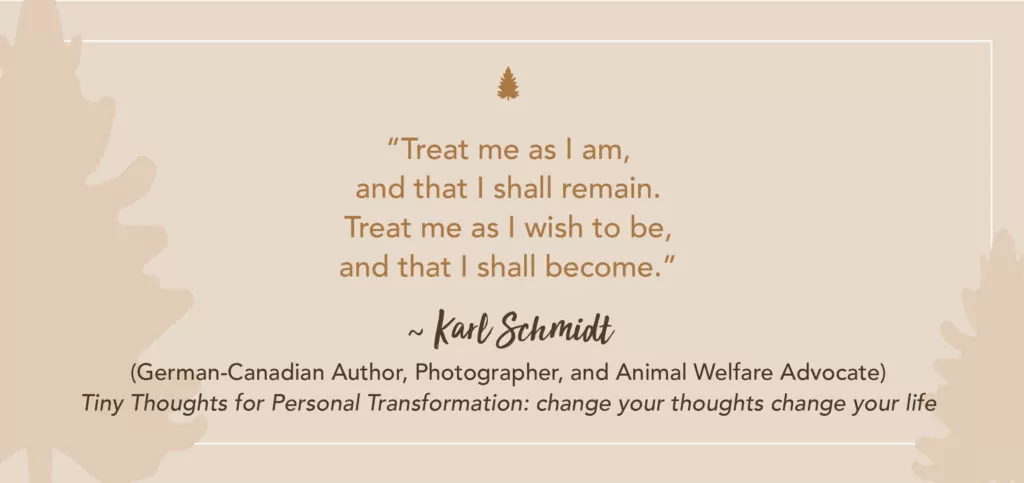
When working with people and their dogs, I am often more concerned with whether the people can change than whether the dogs can. Given a healthy way of life, one suited to the maturity of the dog and the stage of our relationship, I trust in dogs’ incredible capacity for recovery. But it’s getting people to see and think about their dogs differently that can be challenging.
This is the part of my coaching where I sweat and earn my money, helping people relinquish old patterns, sometimes against great inner resistance, and realize that the dogs are in fact waiting for us to get our act together and not the other way around.
Too often in the world of anxious and reactive dogs, we think that anxiety and reactivity are part of their dogs’ psyche. So we feel sorry for them, coddle them, and try to protect them from pain, not realizing that it’s the very pity, coddling, and over-protectiveness that is causing the dogs such angst.
At the seminar this past weekend, one of my students experienced an emotional moment, feeling bad for her dog who appeared “distressed” in the car as she attended the seminar. The dog was contained in the car, tethered safely, and in mild and shady conditions but he was not taking kindly to the situation. I saw a dog rebelling against the structure expected of him but one capable of riding out the stress. In contrast, his owner saw him in distress and felt she had to do something about it.
Thinking of our dogs as being “in distress,” when there is no objective reason whatsoever for them to be, suggests that we think our dogs are weak, fragile, and incapable of riding out a challenge. Imagine a situation where you are in a close relationship with someone and they think of you as being weak, fragile, and in need of constant support and assistance.
Would that make you feel loved or limited?
Would that make you feel supported or smothered?
Dogs know their own strength. So reflect on the torture they must feel being perceived as weak and powerless. I don’t know about you but I would run from this kind of relationship with all I have. Dogs sometimes do run, but more often, they exhibit dysfunctions as a means of dealing the best they can with being seen for what they’re not.
Part of raising great dogs is not just doing physical things; it also involves aligning our minds with the process. This means seeing our dogs not just for how they are now, but ultimately for who they wish to be, and no dog wishes to be anxious, reactive, or aggressive.
Upon concluding the last exercise of the day, that same student lost her dog who’d broken out of his collar, as she was making her way out of our training space. The potentially human-aggressive dog came to me; I ignored him while staying put. He went to Bruna lying down on the ground across from me; she paid him no mind. He ran around some, with everyone keeping themselves and their dogs steady. Calmly, my student was able to call her dog back to her, collar him, and lead him out safely. This showed us and especially her, that she had much more with her dog than she gave herself credit. I knew that her mind had already shifted or this would not have happened, and the day could have ended very differently.
For the dog to change, the change needs to happen in us and in our minds. We need to be not just hopeful but certain about the possibility of change. We need to believe in our dogs’ capacity to handle stress and not shield them from experiences that help them grow. We need to be the ones holding visuals in our minds of our dogs being sound, strong, and spirited.There isn’t an animal or plant that won’t thrive and go as far, high, or fast as it can, given the right resources. Dogs don’t put limit on themselves so let’s not impose and project our own fears and limitations upon them. Instead, let us lose all labels and preconceived notions, and free our dogs and ourselves in the process.